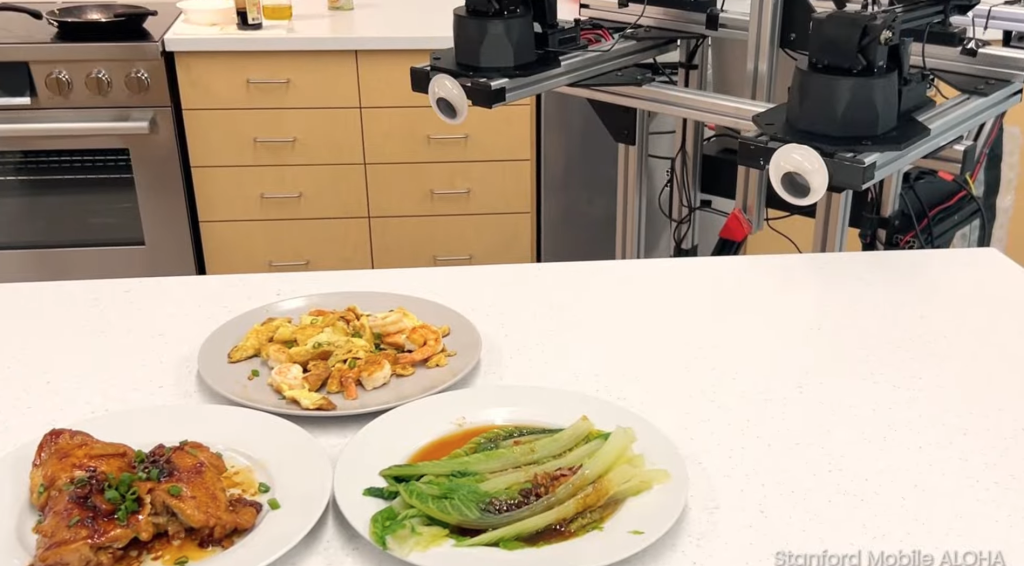
A research team at Stanford University trained a robot they created from off-the-shelf parts to cook a meal and clean, among other tasks. (Source: YouTube video)
Stanford University Trains Lower Cost Robot to Cook, Complete Complex Household Tasks
Stanford University researchers have developed a cost-effective robot, Mobile ALOHA, that can perform complex tasks using AI. With a budget of just $32,000, the team built a robot capable of cooking a three-course meal, among other tasks, while similar robots often cost hundreds of thousands. By utilizing off-the-shelf parts and 3D-printed hardware, they kept the project’s costs low.
The robot was trained on a variety of tasks, such as cooking shrimp and cleaning up stains. To teach the robot a task, it was remotely operated multiple times, each time a bit differently, allowing the robot to learn various ways to accomplish the same task. This training included demonstrations unrelated to the specific task at hand, such as tearing off a paper towel, collected by an earlier version of the robot.
The researchers used a “co-training” approach, combining new and old data, which allowed Mobile ALOHA to learn new tasks relatively quickly, especially compared to the usual approach of training AI systems on thousands of examples. This method also enabled the robot to learn new skills unrelated to the task at hand.
While household tasks are easy for humans, they are significantly harder for robots due to their lack of precision, coordination, and understanding of their environment. However, recent efforts to apply AI techniques to robotics have shown promise in unlocking new capabilities. Google’s RT-2 system, for instance, combines a language-vision model with a robot, allowing humans to give it verbal commands.
The project demonstrated that relatively cheap robot hardware can solve complex problems. It also highlighted that AI is the missing piece in creating more useful robots. The model used shows that robotics training data can be transferable and improve a robot’s performance across tasks. As more data is collected, even if not relevant to a specific task, it can enhance the robot’s performance.
The Stanford team plans to train the robot on more data for harder tasks, such as picking up and folding crumpled laundry. Such tasks have been traditionally challenging for robots due to the complexity of the shapes of the objects. However, their technique is expected to help robots accomplish tasks previously considered impossible.
read more at technologyreview.com







Leave A Comment